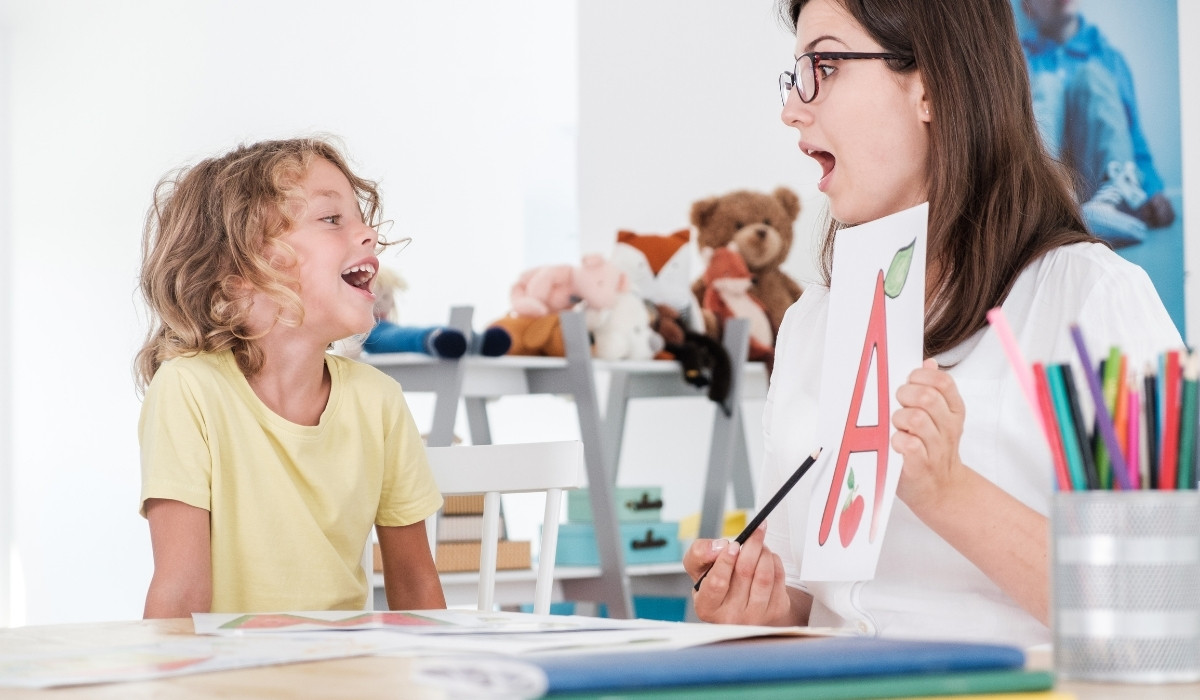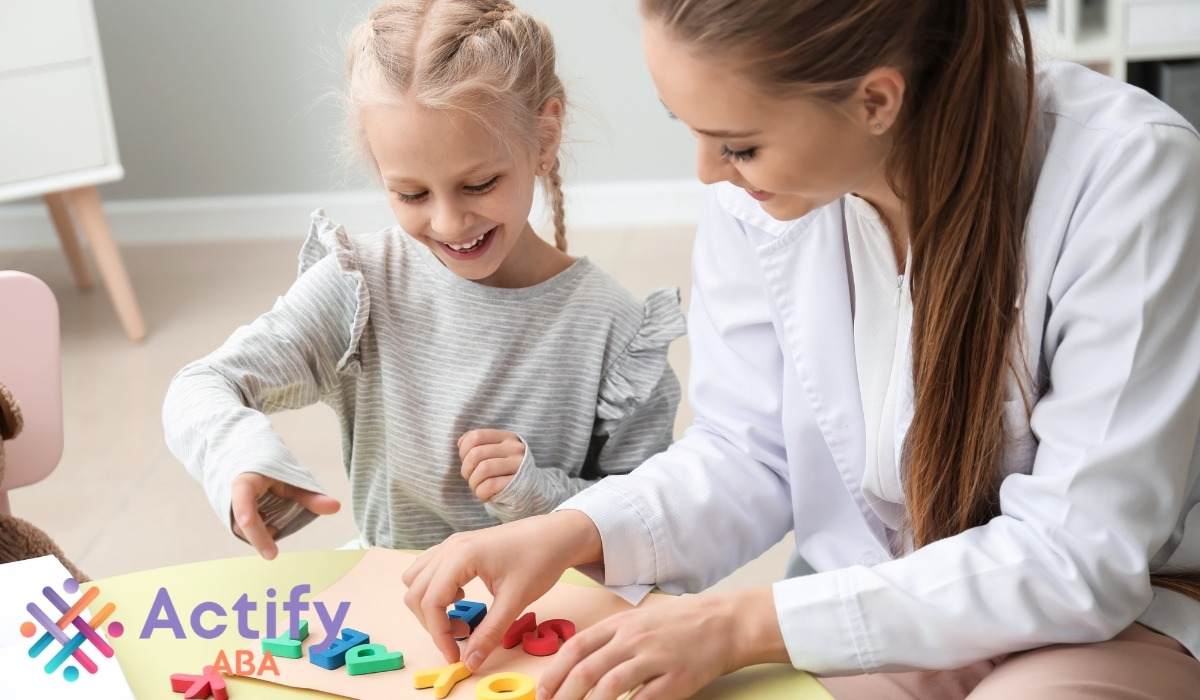
Key Points:
- Language development in autism varies widely, from nonverbal to complex speech, and tailored support is crucial.
- Effective strategies include early intervention, visual supports, and verbal operant training (mands, tacts, vocabulary).
- Consistency, parent involvement, and data-driven ABA approaches promote lasting communication growth.
Research shows that about 30% of children with autism have a limited ability to use verbal language, and many more experience delays in language development compared to their neurotypical peers. These delays can range from mild articulation issues to significant challenges with expressive and receptive language.
Understanding how language develops in children with autism is critical for early intervention and long-term communication success. While no two children follow the same path, many benefit from structured, evidence-based supports that build skills step by step.
In this article, we’ll explore early signs of language delays, how language develops differently in autism, and the practical strategies—especially in ABA therapy—that help children strengthen their communication abilities.
Is Language Development in Autism Delayed or Just Different?
Language development in autism is characterized by delayed or atypical patterns of speech and communication, but children can make meaningful progress with targeted support.
Autism often affects how a child processes speech, uses words, and interacts socially. Some may speak fluently but struggle with conversational norms; others might use only a few words or none. What matters is recognizing that these differences don’t reflect ability but rather unique developmental pathways that can be supported and enriched.
How Do Children With Autism Develop Language Differently?
Children with autism often develop language differently due to how they perceive and process information. Some may have delayed speech onset, where first words appear much later than average, while others might speak fluently but struggle with the social rules of conversation.
A common trait is echolalia, repeating words or phrases heard earlier, which can seem unusual but often reflects attempts to engage or communicate. Others may use language idiosyncratically, applying words in ways that make sense only to them or in highly specific contexts.
These patterns can feel confusing or concerning to caregivers, but they are not signs of failure—they’re clues. Understanding how a child communicates, even if it’s atypical, allows parents and therapists to meet them where they are.

What are the Key Strategies for Supporting Language Growth?
Improving language development in autism is most effective when combining structured interventions with natural opportunities. Below are powerful evidence-based methods used in ABA therapy:
1. Early Intensive Intervention
Starting therapy before age 5 can significantly improve long-term verbal outcomes. Early sessions focus on goals like eye contact, joint attention, and simple words—foundational skills that feed into complex communication. The sooner language learning begins, the better the chances of closing developmental gaps.
2. Functional Verbal Operants
ABA breaks language into functional units called mands (requests), tacts (labels), echoics, and more. Teaching mands—like “cookie” for requesting a snack—gives children language with a purpose. Tacts (e.g., labeling a dog) encourage interaction with the world, while echoic training builds accurate speech. Together, they form a language framework that supports fluid communication.
3. Visual Supports and Social Scripts
Children with autism often understand information visually more easily. Visual schedules, choice boards (e.g., “play” or “eat”), and social stories provide a predictable structure. These tools scaffold language use in real settings.
How Do Parents Reinforce Language Development at Home?
Parents are the most important speech coaches children have. When informed and consistent, parents can use everyday moments to boost communication and encourage generalization across contexts.
Here are practical steps for daily language support:
- Narrate daily routines (“Now we’re washing hands”)
- Use choice prompts (“Do you want apple or banana?”)
- Pause expectantly after prompts to allow child response
- Expand on attempts (“Child says ‘car’ → Adult adds ‘red car’”)
- Reinforce attempts with immediate attention, praise, or access to items
Home reinforcement supports therapy gains and keeps skills active across environments.
What Challenges Commonly Affect Language Progress?
Language development in children with autism is a rewarding journey, but it often includes bumps along the way. Even with structured support, many children face common hurdles that can temporarily slow their progress.
These challenges are not signs of failure, but rather signals that the current approach may need adjusting. Below are some common examples:
1. Short Attention Span
Children may struggle to focus during language activities, making consistent practice and engagement difficult.
2. Speech Clarity Issues
Pronunciation challenges can make words hard to understand, limiting effective communication and social interaction.
3. Low Motivation to Speak
If communication doesn’t lead to desired outcomes, children may not see value in using words.
4. Trouble Generalizing Skills
Some children only use language in therapy settings, struggling to transfer it to real-life situations.
These challenges can be overcome by adjusting the pace, using engaging materials, increasing motivation, and teaching across multiple settings. Effective ABA plans include data to identify and address these barriers early.
When is it Time to Consider AAC?
For children who remain minimally verbal after direct speech therapy, augmentative and alternative communication (AAC)—like PECS, sign, or speech devices—can bridge gaps in communication.
AAC tools can:
- Function as early mand systems
- Reduce frustration tied to limited speech
- Serve as stepping stones to spoken language
Importantly, AAC does not block speech—it supports communication while speech skills mature.
How is Progress Measured In Language Development?
Progress in language development is measured by tracking specific verbal behaviors over time, such as mands (requests), tacts (labels), echoics (repetitions), and spontaneous communication. ABA therapists collect data on how often and accurately these behaviors occur in natural settings.
Consistent monitoring helps identify skill growth, readiness for more complex language goals, and areas needing support. Evaluating changes in vocabulary, sentence length, and generalization across people and environments ensures that the intervention remains targeted and effective.
Support Your Child’s Growth With ABA Therapy
Language development in autism isn’t just about speech—it’s about connection, independence, and reducing frustration. With thoughtful, data-driven ABA strategies, children can build comprehension, expression, and social interaction skills that enrich every area of life.
At Actify, we offer compassionate ABA therapy in Maryland focused on language development through verbal operant training, visual supports, AAC options, and parent coaching. Our goal is to help each child find their voice and use it confidently.
Contact us today to learn how our ABA therapy in Maryland can support your child’s language journey—so they can express, connect, and thrive.
